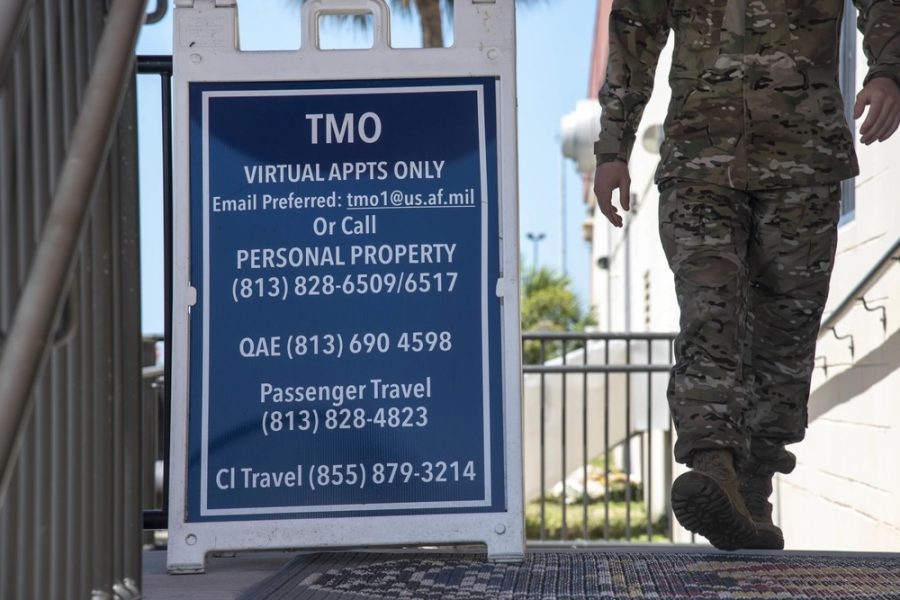Airmen scheduled to retire or separate early next year may have to wait a little longer for their official orders to do so, as the Air Force is running low on cash to cover moving expenses.
In a memo that circulated through social media last week, officials at the Air Force Personnel Center told military personnel flights that the service is delaying issuance of separation orders for troops with a separation date of Jan. 1, 2026 or later, and the service is delaying issuance of retirement orders for troops with a retirement date of April 1, 2026 or later.
This isn’t stop-loss, where troops are kept in uniform beyond their separation or retirement dates. Airmen due to separate or retire next year will still do so on their approved dates. But the orders that cover troops’ moving expenses will not be issued until the start of fiscal year 2026.
That’s because even if an Airman does not move until 2026, the Air Force sets aside money to pay for that move in FY2025, if that is when his or her orders are issued.
“Permanent Change of Station (PCS) funds are obligated at the time the separation or retirement orders are authenticated,” an Air Force spokesperson told Air & Space Forces Magazine. “By better managing the timing of order issuance, the Air Force can align the obligation of these PCS funds with mission requirements, budget realities, and overall fiscal year execution.”
The memo, which Air Force officials confirmed is authentic, said the move ensures the Air Force’s FY25 military personnel (MILPERS) budget stays in the black. Otherwise, it could violate the Anti-Deficiency Act.
“It’s not because the Chief of Staff of the Air Force said ‘we want to wait to give people orders,’” said RAND senior operations researcher and Air Force veteran Lisa Harrington. “It’s because the Air Force must comply and not overspend that budget by law.”
Sometimes the planned MILPERS budget comes up short of actual need. In 2023, for example, the Air Force had to pause bonus programs, PCS moves, and some other incentive pays for nearly three weeks when the service ran out of personnel funds. Higher-than-expected PCS costs, a result of inflation, and higher retention and recruiting bonuses all contributed to the shortfall, officials said at the time.
Air Force officials could not immediately provide specific factors that may have contributed to this year’s MILPERS crunch. Inflation, exchange rates, retention levels, and other fluctuating factors mean it may be impossible to eliminate the possibility of a shortfall entirely. But better integration of MILPERS policy stakeholders and better data on the impact of bonuses could reduce the likelihood of a shortfall, or mitigate the impact of one, RAND wrote in the past.
The delay should lift when FY2026 starts–and new cash arrives–on Oct. 1, which is about three months before the relevant separation dates begin on Jan. 1, 2026, and about six months before the relevant retirement dates begin on April 1, 2026.
This delay could affect Airmen who planned on setting up their moves early, as the memo warns Airmen to “refrain from any financial obligations that would create expenses and/or a hardship associated with preparing for a move until they receive orders in hand.” But there is no regular tempo for issuing military orders, according to the Air Force spokesperson.
“There is no “typical” timeline for orders issuance,” the spokesperson said. “The length of time for how far in advance orders are issued can vary widely.”
The memo outlines a process where separating or retiring troops with “a justifiable hardship” can apply for exceptions, but exceptions will not be granted “for personal convenience, e.g. to out-process prior to SkillBridge training.”
SkillBridge is a Defense Department program that provides internships, apprenticeships, or training in civilian organizations for transitioning Active service members. Airmen don’t need orders to apply for or begin Skillbridge training, but the delay means Airmen can’t out-process from their current duty location, which could limit where they can participate in Skillbridge.
When the pause lifts, AFPC will prioritize cases based on their separation or retirement date and participation in SkillBridge, though it could take a while.
“AFPC will quickly work the backlog of orders when authorization is restored, but a delay at the restart should be anticipated,” the memo said. “Orders will not be prioritized merely to accommodate terminal leave since nearly all separating Airmen take terminal leave.”
Though MILPERS shortfalls may be impossible to eliminate, the delay in orders raises familiar questions, such as whether the time- and resource-heavy process of moving families every two or so years is really necessary.
“Why does the Air Force move people at the pace it does, and how can we help them think about the order-of-magnitude savings from policy changes that might slow that down?” Harrington said.
For example, what would be the operational and fiscal impact of changing overseas tour lengths from 36 months to 48 months? RAND is working with the Air Force to try to answer questions like those.
The answers could be particularly important as the service adopts a new force generation model known as AFFORGEN. Under the model, units go through 24-month cycles broken into six-month phases: “reset,” “prepare,” “ready,” and “available to commit.” AFFORGEN ties in with a shift to deployable combat wings, where Airmen train, deploy, and rotate home together in large formations rather than ad hoc, as was common during the Global War on Terror.
How the Air Force pursues those changes could impact the pace of PCS moves, which in turn could affect the size of the PCS budget, Harrington said.


